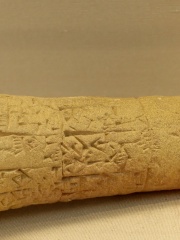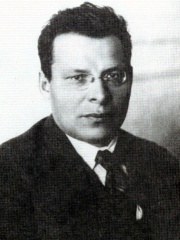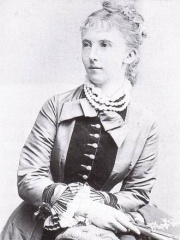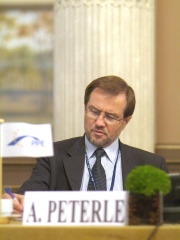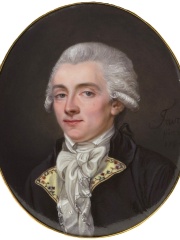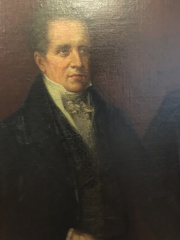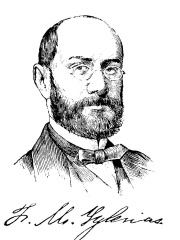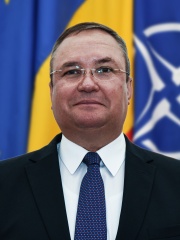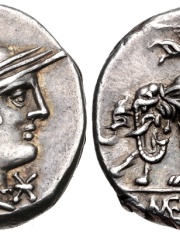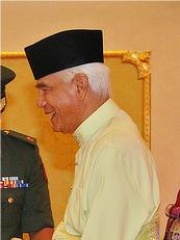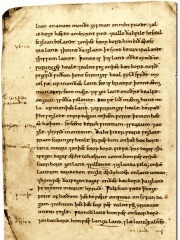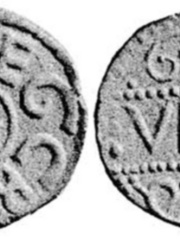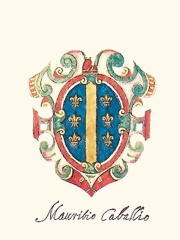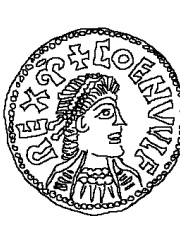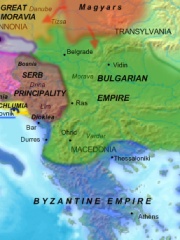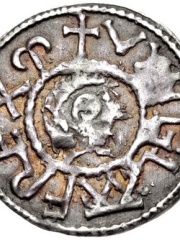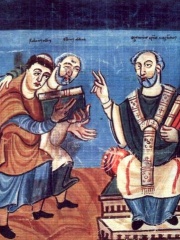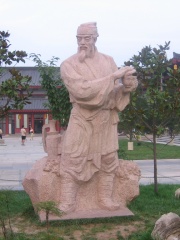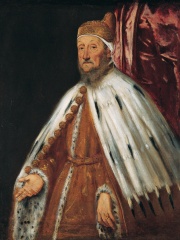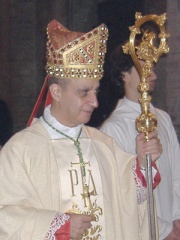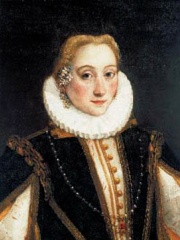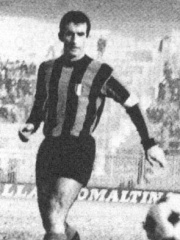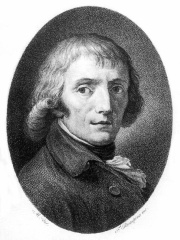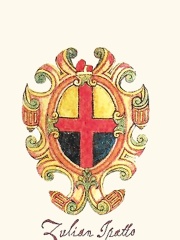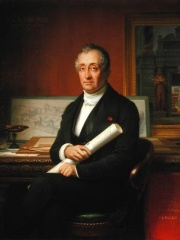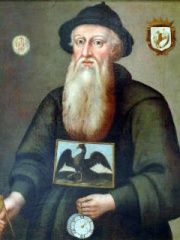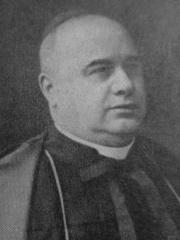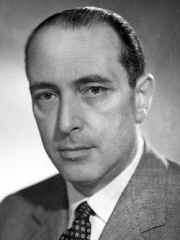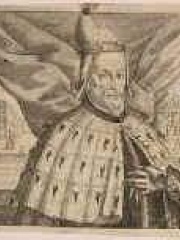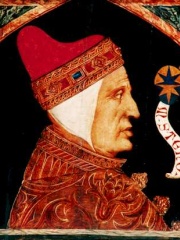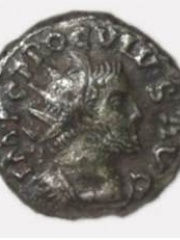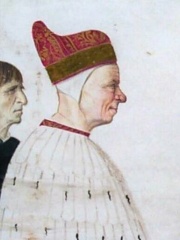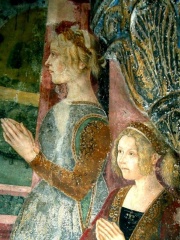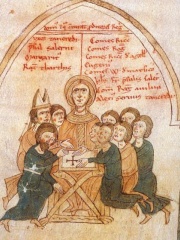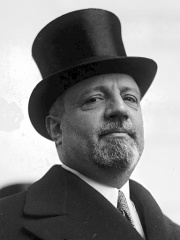POLITICIAN
Giovanni Galbaio
800 - 804
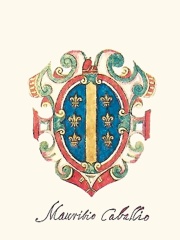
 Giovanni Galbaio
Giovanni Galbaio
Giovanni Galbaio was the eighth Doge of Venice (787–804) according to tradition, but only the sixth historically verifiable one. Read more on Wikipedia
His biography is available in 21 different languages on Wikipedia (up from 20 in 2024). Giovanni Galbaio is the 12,060th most popular politician (down from 11,318th in 2024), the 2,968th most popular biography from Italy (down from 2,856th in 2019) and the 741st most popular Italian Politician.
Memorability Metrics
Page views of Giovanni Galbaio by language
Among POLITICIANS
Among politicians, Giovanni Galbaio ranks 12,061 out of 19,576. Before him are Entemena, Jānis Rudzutaks, Princess Marie of Prussia, Lojze Peterle, Jean Joseph Mounier, Agustín Eyzaguirre, and José María Iglesias. After him are Nicolae Ciucă, Omar Sharmarke, Deidamia I of Epirus, Gaius Caecilius Metellus Caprarius, and Azlan Shah of Perak.
Most Popular Politicians in Wikipedia
Go to all RankingsEntemena
2430 BC - 2389 BC
HPI: 59.24
Rank: 12,060
Jānis Rudzutaks
1887 - 1938
HPI: 59.24
Rank: 12,061
Princess Marie of Prussia
1855 - 1888
HPI: 59.24
Rank: 12,062
Lojze Peterle
1948 - Present
HPI: 59.24
Rank: 12,063
Jean Joseph Mounier
1758 - 1806
HPI: 59.24
Rank: 12,064
Agustín Eyzaguirre
1768 - 1837
HPI: 59.24
Rank: 12,065
José María Iglesias
1823 - 1891
HPI: 59.24
Rank: 12,066
Giovanni Galbaio
800 - 804
HPI: 59.24
Rank: 12,067
Nicolae Ciucă
1967 - Present
HPI: 59.23
Rank: 12,068
Omar Sharmarke
1960 - Present
HPI: 59.23
Rank: 12,069
Deidamia I of Epirus
400 BC - Present
HPI: 59.23
Rank: 12,070
Gaius Caecilius Metellus Caprarius
160 BC - 1 BC
HPI: 59.23
Rank: 12,071
Azlan Shah of Perak
1928 - 2014
HPI: 59.23
Rank: 12,072
Contemporaries
Among people born in 800, Giovanni Galbaio ranks 60. Before him are Boso the Elder, García Jiménez of Pamplona, García Galíndez, Wulfstan of Hedeby, Ecgberht II of Kent, and Saraha. After him are Maurizio Galbaio, Coenwulf of Mercia, Krešimir I of Croatia, Chorso, 'Abd al-Hamīd ibn Turk, and Wiglaf of Mercia. Among people deceased in 804, Giovanni Galbaio ranks 3. Before him are Alcuin, and Lu Yu.
Others Born in 800
Go to all RankingsBoso the Elder
POLITICIAN
800 - 855
HPI: 60.16
Rank: 54
García Jiménez of Pamplona
POLITICIAN
800 - 886
HPI: 59.96
Rank: 55
García Galíndez
POLITICIAN
800 - 833
HPI: 59.92
Rank: 56
Wulfstan of Hedeby
EXPLORER
800 - 850
HPI: 59.91
Rank: 57
Ecgberht II of Kent
POLITICIAN
800 - 784
HPI: 59.90
Rank: 58
Saraha
POLITICIAN
800 - Present
HPI: 59.73
Rank: 59
Giovanni Galbaio
POLITICIAN
800 - 804
HPI: 59.24
Rank: 60
Maurizio Galbaio
POLITICIAN
800 - 797
HPI: 58.81
Rank: 61
Coenwulf of Mercia
POLITICIAN
800 - 821
HPI: 58.58
Rank: 62
Krešimir I of Croatia
POLITICIAN
800 - 945
HPI: 58.45
Rank: 63
Chorso
POLITICIAN
800 - 790
HPI: 58.35
Rank: 64
'Abd al-Hamīd ibn Turk
MATHEMATICIAN
800 - 900
HPI: 58.07
Rank: 65
Wiglaf of Mercia
POLITICIAN
800 - 839
HPI: 57.84
Rank: 66
Others Deceased in 804
Go to all RankingsAlcuin
RELIGIOUS FIGURE
735 - 804
HPI: 73.89
Rank: 1
Lu Yu
WRITER
733 - 804
HPI: 66.22
Rank: 2
Giovanni Galbaio
POLITICIAN
800 - 804
HPI: 59.24
Rank: 3
In Italy
Among people born in Italy, Giovanni Galbaio ranks 2,968 out of 5,161. Before him are Stefano Domenicali (1965), Pietro Loredan (1482), Rino Fisichella (1951), Benny Benassi (1967), Francesca Neri (1964), and Olympia Fulvia Morata (1526). After him are Armando Picchi (1935), Giuseppe Parini (1729), Teodato Ipato (750), Louis Visconti (1791), Nicolò Longobardo (1565), and Camillo Caccia Dominioni (1877).
Others born in Italy
Go to all RankingsStefano Domenicali
POLITICIAN
1965 - Present
HPI: 59.28
Rank: 2,962
Pietro Loredan
POLITICIAN
1482 - 1570
HPI: 59.28
Rank: 2,963
Rino Fisichella
RELIGIOUS FIGURE
1951 - Present
HPI: 59.27
Rank: 2,964
Benny Benassi
MUSICIAN
1967 - Present
HPI: 59.27
Rank: 2,965
Francesca Neri
ACTOR
1964 - Present
HPI: 59.26
Rank: 2,966
Olympia Fulvia Morata
WRITER
1526 - 1555
HPI: 59.24
Rank: 2,967
Giovanni Galbaio
POLITICIAN
800 - 804
HPI: 59.24
Rank: 2,968
Armando Picchi
SOCCER PLAYER
1935 - 1971
HPI: 59.23
Rank: 2,969
Giuseppe Parini
WRITER
1729 - 1799
HPI: 59.22
Rank: 2,970
Teodato Ipato
POLITICIAN
750 - 800
HPI: 59.22
Rank: 2,971
Louis Visconti
ARCHITECT
1791 - 1853
HPI: 59.21
Rank: 2,972
Nicolò Longobardo
RELIGIOUS FIGURE
1565 - 1655
HPI: 59.20
Rank: 2,973
Camillo Caccia Dominioni
RELIGIOUS FIGURE
1877 - 1946
HPI: 59.20
Rank: 2,974
Among POLITICIANS In Italy
Among politicians born in Italy, Giovanni Galbaio ranks 741. Before him are Fernando Tambroni (1901), Francesco Molin (1575), Michele Steno (1331), Proculus (300), Stefano Domenicali (1965), and Pietro Loredan (1482). After him are Teodato Ipato (750), Andrea Vendramin (1393), Blanche of Montferrat (1472), Margaritus of Brindisi (1149), Bartolomeo Gradenigo (1260), and Giuseppe Volpi (1877).
Fernando Tambroni
1901 - 1963
HPI: 59.36
Rank: 735
Francesco Molin
1575 - 1655
HPI: 59.35
Rank: 736
Michele Steno
1331 - 1413
HPI: 59.33
Rank: 737
Proculus
300 - 281
HPI: 59.30
Rank: 738
Stefano Domenicali
1965 - Present
HPI: 59.28
Rank: 739
Pietro Loredan
1482 - 1570
HPI: 59.28
Rank: 740
Giovanni Galbaio
800 - 804
HPI: 59.24
Rank: 741
Teodato Ipato
750 - 800
HPI: 59.22
Rank: 742
Andrea Vendramin
1393 - 1478
HPI: 59.19
Rank: 743
Blanche of Montferrat
1472 - 1519
HPI: 59.19
Rank: 744
Margaritus of Brindisi
1149 - 1197
HPI: 59.18
Rank: 745
Bartolomeo Gradenigo
1260 - 1342
HPI: 59.17
Rank: 746
Giuseppe Volpi
1877 - 1947
HPI: 59.16
Rank: 747
